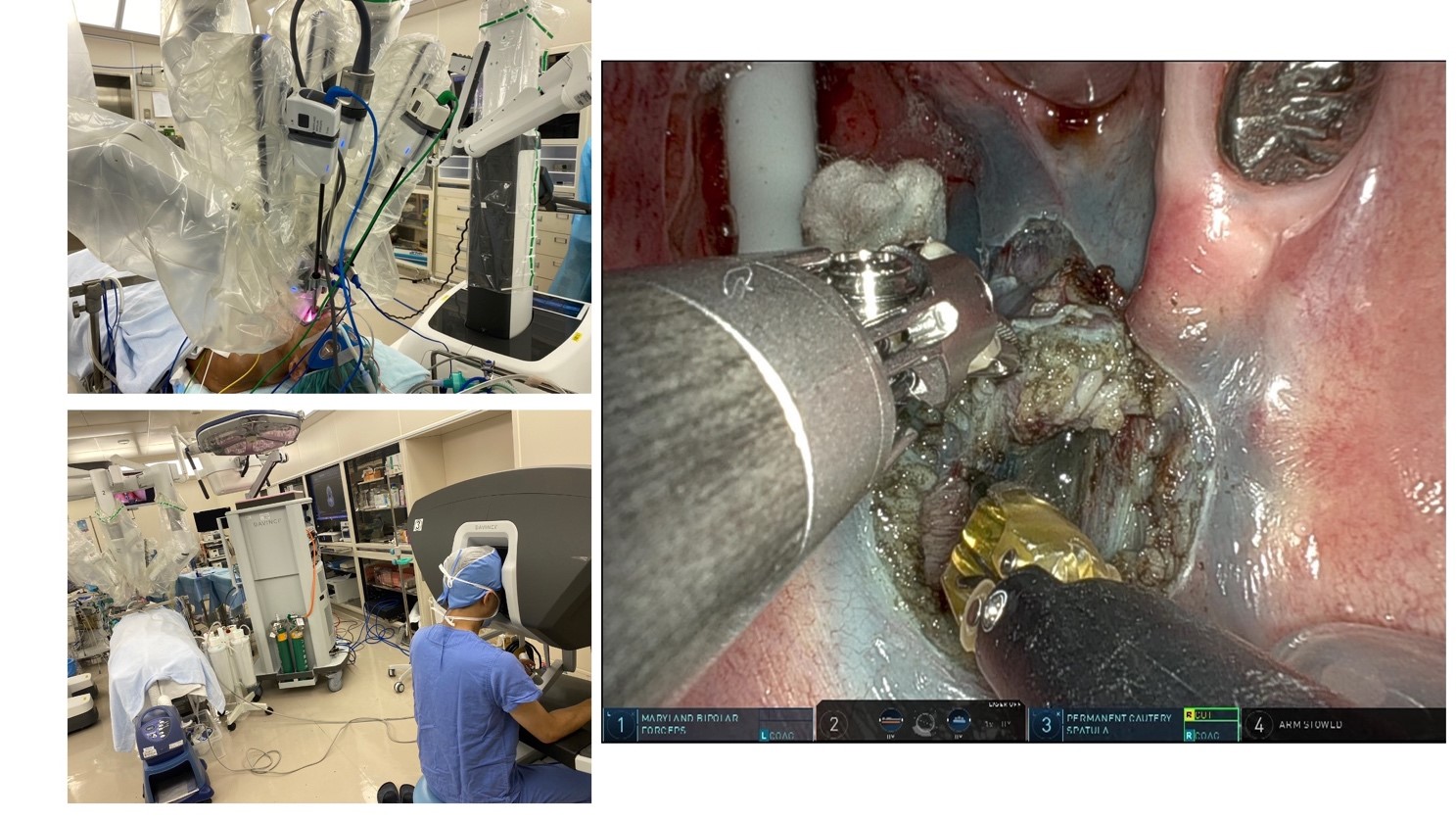Head and neck cancer: From minimally invasive robotic surgery for early-stage to extended resection for rare or recurrent tumors
Go Omura
2023/12/1
In order to cure cancer and maintain the patient’s postoperative function, we try to perform minimally invasive surgery for early-stage cancer as much as possible. In addition to endoscopic resection (TOVS = Transoral Videolaryngoscopic surgery), we have recently been performing transoral robotic surgery (TORS = Transoral robotic surgery) using a surgical robot. The advantages of the surgical robot are that it has an articulated mechanism, which enables precise surgery, and a stable field of view because the camera and surgical instruments are free from motion blur. (Fig 1)
On the other hand, more than one-fourth of 450 surgeries we perform annually are extended resections with free flap reconstruction, not only for initial treatment, but also for salvage setting for patients who were deemed inoperable at other hospitals, if possible. (Fig 2) For sinonasal malignancies, which has many rare histopathologic types, in addition to expanded resection including skull-base surgery, (Fig. 3) multidisciplinary treatment is performed in team collaboration with the department of pathology, medical oncology, radiation oncology, and other departments.
Recently, we have also introduced photoimmunotherapy (AlluminoxTM) for recurrent and unresectable local lesions. (Fig 4)
Figure 1. TORS = Transoral robotic surgery

Figure 2. Radical resection combined with free flap reconstruction for advanced cancer.

Figure 3. Skull-base surgery for advanced sinonasal cancer.

Figure 4. Photoimmunotherapy




